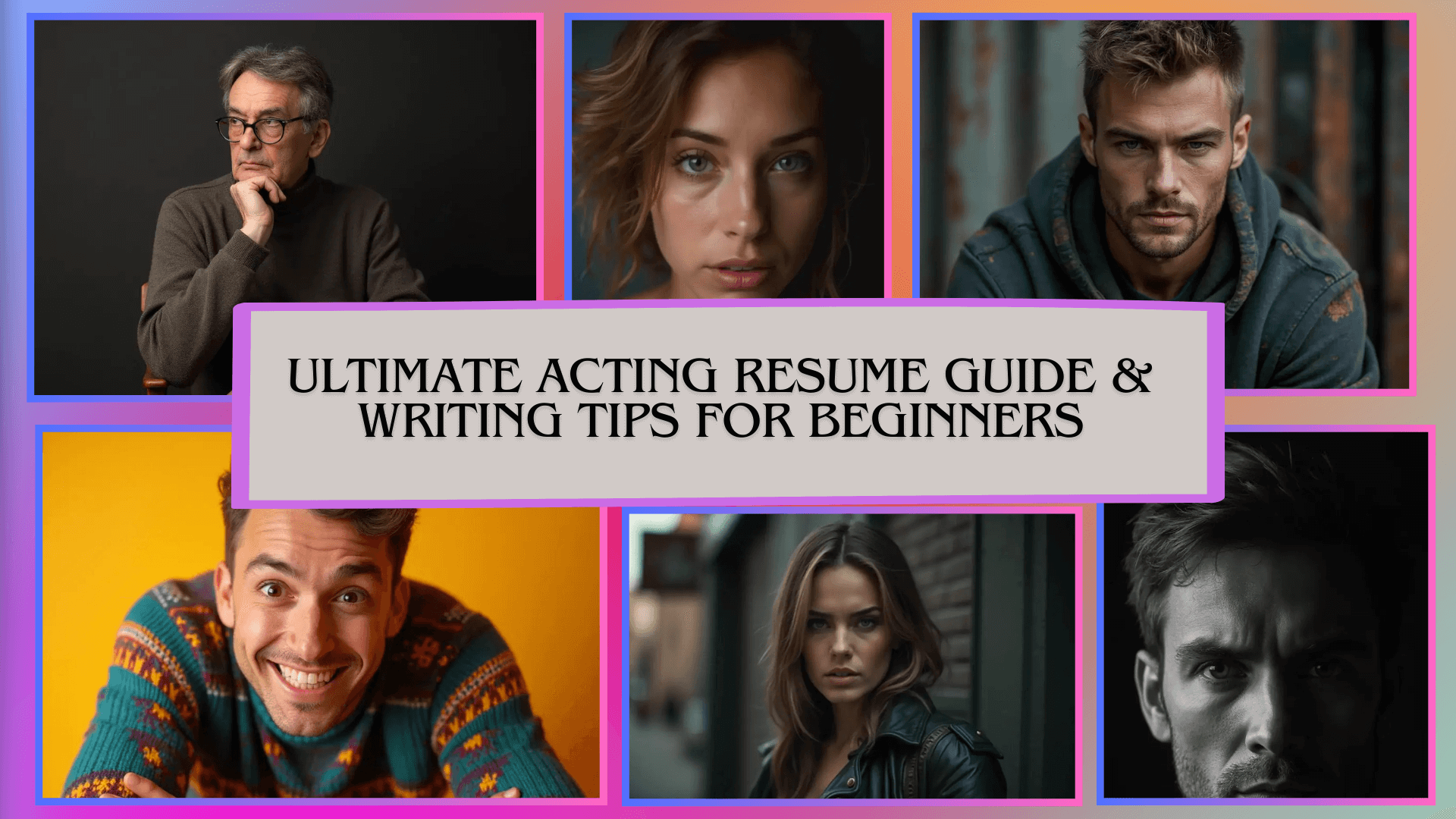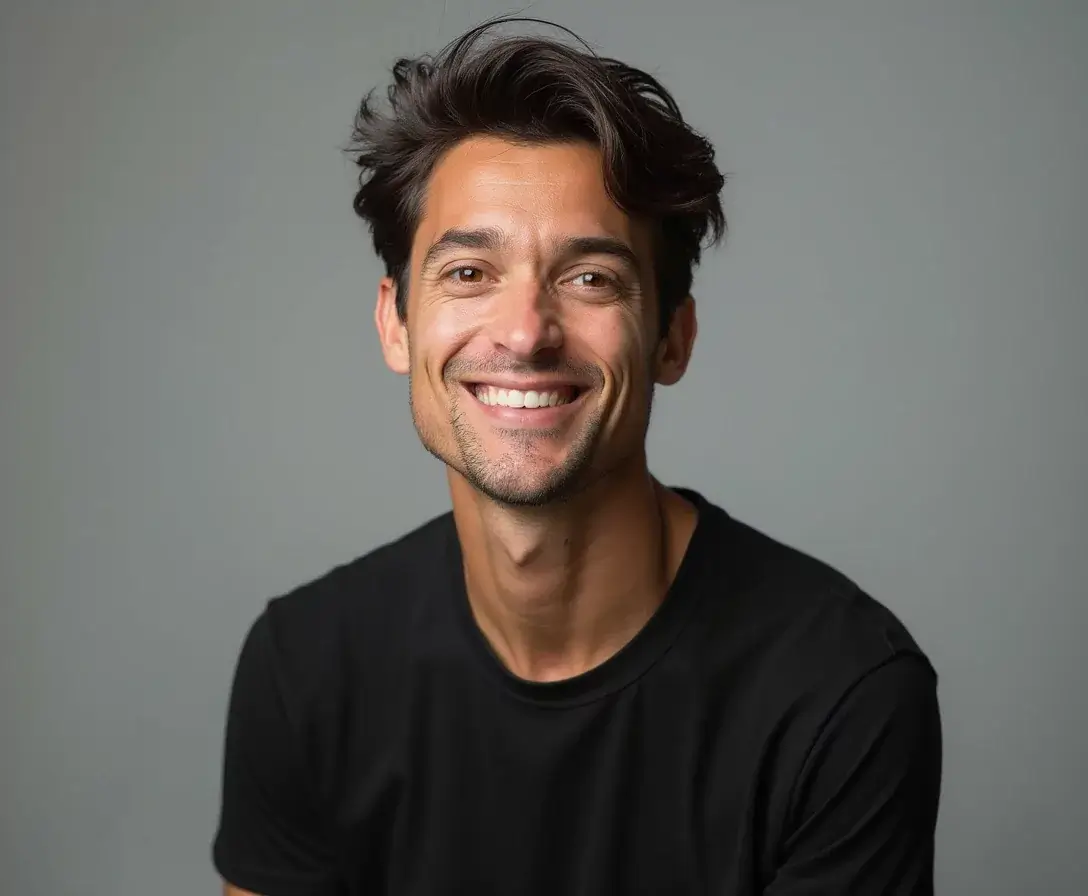
Casting directors get thousands of applications for every role. But here’s the tough part, they only call a few people to audition. And from those, just one actor books the job. Crazy, right? That’s why the way you structure your acting resume matters so much. It’s the first thing casting directors see, and only takes them seconds to move to the next resume if yours is weak or unattractive. However, with the right format and details, your resume can grab their attention and get you in the room. This blog will guide you on how to create a perfect acting resume. Let’s get started.
What Is an Acting Resume?
An acting resume is a one-page document that tells casting directors who you are, what experience you have, and what special skills make you stand out. It is like your golden ticket to auditions and that is why it needs to be clear and impressive. You might probably think a resume is just a list of jobs. Well, it’s not like that in the acting world. Unlike a regular job resume, which focuses on work history and skills, an acting resume is all about your performances. It lists your film, TV, theater, and commercial work, along with any training you’ve had. Fortunately, even if you don’t have much experience yet, don’t worry. As you keep reading, we will show you ways to make your resume strong.
What are the Essential Sections of an Acting Resume?
Your acting resume isn’t just a boring piece of paper, it’s your story. However, if it’s messy or missing key details, casting directors will pass and move on to the next person. Below are the important sections of an acting resume:
1. Personal Information
Your name should be right at the top in big, bold letters. It’s your brand, so make it stand out. Right below that, add your contact information, phone number, and email. If you have an agent or manager, their contact details should go here too. And if you’re part of a union like SAG-AFTRA or Equity, make sure to mention that. If not, no worries. Just leave that space blank.

2. Headshot Attachment
Your headshot is also as important as your resume. If you’re printing one out, make sure your resume is the same size as your headshot which is 8x10 so it fits behind it. You can staple or tape it to the back. For digital submissions, save it as a PDF and include your name in the file name. Also, make sure your headshot is up to date. If you look totally different from your picture it’s time for a new one. This way casting directors will recognize you the second you walk in.
Now, getting a professional headshot is always a great option. A good photographer knows how to capture your best angles, make sure the lighting is perfect, and create a polished industry-standard image. However, professional headshots can be expensive. If you’re just starting out or on a budget booking a photographer might not be easy. That’s where AI-generated headshots come in. With tools like Headshot Photo, you can get a high quality, professional-looking headshot in minutes without breaking the bank. And guess what? Casting directors won’t even be able to tell the difference.

3. Acting Experience
This is the heart of your resume. You'll have to list all the projects you’ve worked on. Each project should include the name of the production, your role, and where it was produced or who directed it. Keep it clean and organized so casting directors can quickly scan through. If you’re just starting out, that’s okay. Everyone begins somewhere. You can include student films, indie projects, or even community theater. The important thing is to show that you’re gaining experience and working on your craft.

4. Training & Education
Casting directors love to see that you’re constantly learning and improving. Just mention any acting classes, workshops, or drama schools you’ve attended. If you’ve trained with a well-known coach, mention their name. Also, if you’ve learned specific skills like method acting, or stage combat, definitely include that. Training shows that you’re serious about your craft, even if you don’t have many credits yet.

5. Special Skills
This is where you get to show off your unique talents. Maybe you speak Spanish, do a flawless British accent, play the guitar, or have a background in dance or martial arts. Whatever makes you stand out, put it here. But be honest. If you say you can juggle and a casting director asks you to do it, you better be ready.

How to Create an Acting Resume with No Experience
You want to be an actor, but you have no experience. That’s okay, everyone starts somewhere. The trick is to highlight what you do have and make your resume look polished and professional. How can you do that? Go ahead and check out these steps below:
List Your Training
Even if you haven’t been in a big production yet, training counts as experience. Have you taken any acting classes? Joined a workshop? Studied with a coach? All of that belongs on your resume. The thing is, acting is a craft, and casting directors want to see that you’re learning and improving. And if you haven’t taken any classes yet, now is the perfect time to start. Look for local drama schools, online courses, or even community theater programs.
Include Small Roles
You might think you need a major role to put something on your resume, but that’s not true. If you’ve been in a student film, a community theater play, or even worked as a background extra, add it to your experience section. List the project name, the type of role you played, and where it was produced. Even small roles show that you’re getting involved and building your skills.
Show Your Skills
Maybe you speak another language, do cool accents, or play an instrument. Or, you might be great at dancing, gymnastics, or even stage combat. These special skills make you unique and can help you land roles.
Make It Look Good
Even if you don’t have much experience, your resume should still look clean and professional. Use a simple font like Arial or Times New Roman, keep the layout easy to read, and make sure your name is big and bold at the top. Your resume should be 8x10 inches so it fits neatly behind your headshot. If you’re submitting it digitally, save it as a PDF with your name in the file name.
Common Mistakes to Avoid in Your Acting Resume
Making a great acting resume isn’t just about listing everything you’ve done. It’s also about knowing what to leave out. Many actors make mistakes that can hurt their chances of getting noticed by casting directors. Let’s go over some common ones and how to avoid them.
1. Adding Too Much Information
One big mistake is putting too much on your resume. If you’ve done a lot of acting work, you don’t need to list every single role. Instead, choose your best and most important performances. Casting directors don’t have time to read long lists. They just want to see what really matters. The same goes for training. While acting classes and workshops are great, you don’t need to include every single one. Focus on the ones that were the most important, especially if you learned from well-known teachers or schools. Keeping your resume short and to the point will make it stronger.
2. Making It Complicated
Another mistake actors make is overcomplicating their resumes. Fancy designs can make it harder for casting directors to find what they need. A simple, clean layout with clear headings is the best way to go. Your resume should include only the key sections like your contact details, acting experience, training, special skills, and union membership (if you have one). Anything more is unnecessary and could make your resume look messy.
3. Not Keeping It Updated
Your acting resume isn’t something you create once and forget about. It needs to be updated regularly. Every time you book a new role, finish an important training program, or learn a new skill, add it to your resume. A well-crafted resume shows casting directors that you’re serious about your career and always improving. Keep it simple, and always focus on quality over quantity.
Why Use Headshot Photo for Your Acting Resume?
Headshot Photo is a total game changer when it comes to taking quality headshots. Instead of spending hours booking a photographer, getting ready for a shoot, and waiting for edits you can get a professional-looking headshot in just a few clicks.
The best part? It’s way more affordable than hiring a photographer. Professional headshots can cost hundreds of dollars but with HeadshotPhoto you get high-quality results at just $29.. Also, it’s super quick. Just upload a few clear photos of yourself and the AI works its magic to create a headshot that looks like you just walked out of a high-end studio.
Another cool thing about this AI tool is that you can customize your headshot to fit your style. If you want a different background or a certain lighting effect no problem. The AI gives you multiple looks so you can choose the one that best represents you. Since the final result is clean and professional it’s perfect for your acting resume. If you need a strong first impression this is definitely worth trying.
Conclusion
Your acting resume is your first impression, so it needs to be strong. With the right resume and photo, you’ll have a better chance of landing auditions. Want a professional headshot without the high cost? Try Headshot Photo today.
FAQs
1. Can an acting resume be 2 pages long?
No, an acting resume should always be one page. Casting directors want quick, easy-to-read information. If you have a lot of experience, list only your best and most relevant roles.
2. Why is it called a resume?
It’s called a resume because it gives a summary of your work, training, and skills. Just like a job resume, it helps casting directors quickly see if you’re a good fit for a role.
3. What not to put on an acting resume?
Don’t add personal details like age, weight, or home address. Avoid fake credits, too much extra information, or unrelated jobs. Keep it focused on acting experience, training, and special skills.
4. What type of paper should I print my acting resume on?
Use plain white printer paper, but make sure it’s not too thin. It should match the size of your 8x10 headshot and be neatly trimmed if needed.
